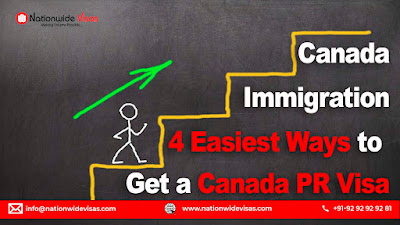Before we get into the qualifying score required in the Manitoba points calculator, let us first understand how the Manitoba PNP works.
What is the Manitoba PNP?
The province of Manitoba manages the Manitoba Provincial Nominee Program (MPNP). Under this program, aspiring immigrants with the required mix of skills and work experience in the province – are eligible for a provincial nomination from Manitoba.
Skilled Worker Stream: This stream is designed keeping in mind Manitoba’s employers’ needs and requirements. Under Manitoba’s Skilled Worker Stream, the province selects skilled and experienced overseas candidates that can support and sustain Manitoba’s labor market shortages – and subsequently, get nominated for permanent residency. There are two categories in this stream:
Skilled Workers in Manitoba
Skilled Workers Overseas
Business Investor Stream: This stream is designed to hire and nominate qualifying business investors and entrepreneurs, who showcase the intent and capacity to set up a new business in Manitoba within the first two years of their arrival in Canada. There are two categories in this stream:
The Entrepreneur Pathway
The Farm Investor Pathway
How to apply under the Manitoba PNP?
Applying under Manitoba’s PNP is an easy 3-step process:
STEP 1: Submission of Express of Interest (EOI).
STEP 2: Highest scoring candidates are issued an Invitation to submit an MPNP application.
STEP 3: Following a thorough audit, the MPNP nominates eligible candidates to make a separate application to the IRCC for a permanent resident visa. You will need to qualify under the 67 points immigration Canada calculator for this.
What are the eligibility criteria for Manitoba PNP?
The eligibility criteria in any of the above programs vary – however, you will be required to meet the following general requirements:
Be between the ages of 21 and 45.
Demonstrate employability and adaptability needed of all MPNP candidates.
At least 1 year of post-secondary education or training program.
At least 2 years of full-time work experience in the last 5 years.
Showcase the ability to find employment in Manitoba in the same field as their work experience.
Plans to achieve appropriate license or certificate required in case of regulated occupations.
Submit a settlement plan demonstrating the intent and ability to establish and settle in Manitoba as a permanent resident.
If required, provide proof of language proficiency. Not required for Canada PR without IELTS programs.
Manitoba Points Calculator
The Manitoba points calculator will assess your immigration profile based on 5 key selection factors, among other additional factors:
Age – Maximum points 10
Education – Maximum points 25
Language Proficiency - Maximum points 25
Work Experience - Maximum points 15
Adaptability - Maximum points 25
The qualifying score for the Manitoba points calculator
In order to be eligible under the Manitoba PNP, you will need to meet the minimum threshold of 60 points out of 100 in the Manitoba points calculator.
What are the documents required for Manitoba PNP?
Manitoba Provincial Nominee Program (MPNP) assesses your eligibility based on the documents you have submitted alongside your PNP application. You will be required to submit the following major documents:
Personal information documents such as Birth certificate, passport, or marital status documents.
Academic documents such as Degree, Diploma, or Certificate.
If required, provide proof of language proficiency. Not required for Canada PR without IELTS programs.
Work experience supporting documents.
Proof of settlement funds.
Settlement plan.
What is the processing time for Manitoba PNP?
The processing time for Manitoba PNP varies from country to country – and program. If you have the documents required and have met other prerequisites such as a qualifying score in the Manitoba points calculator, you can expect your MPNP application to be processed within 12 and 15 months.








